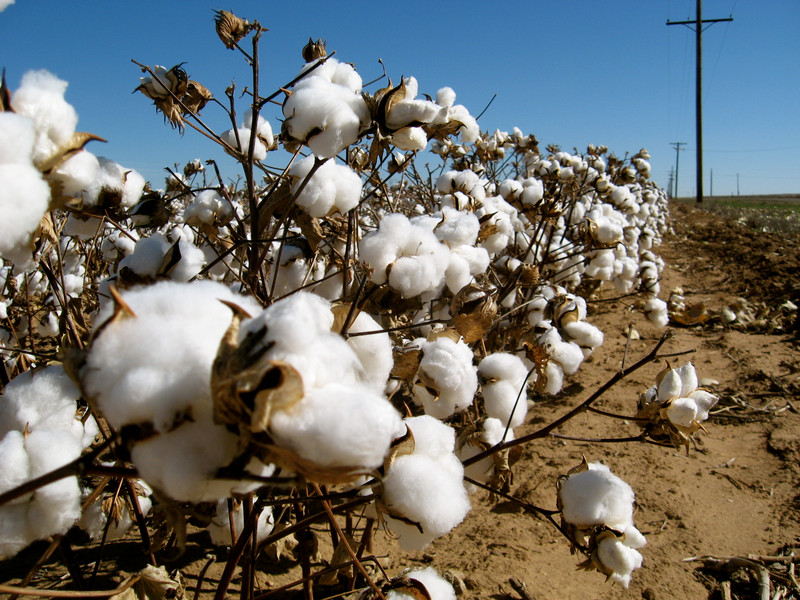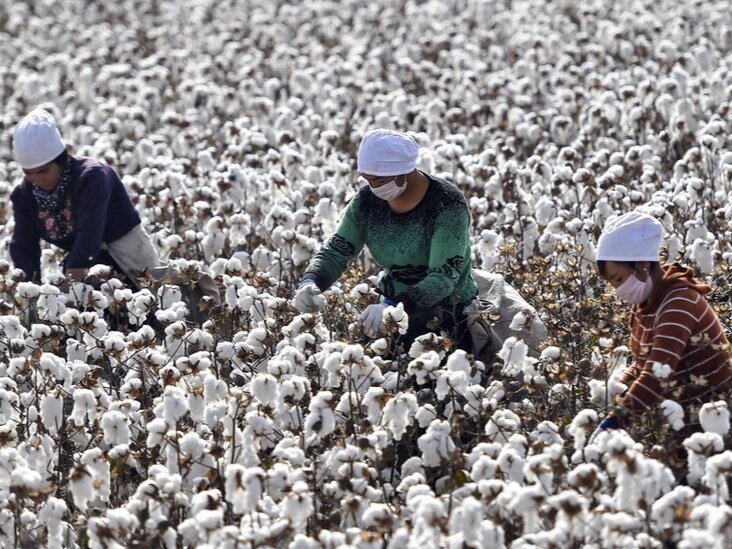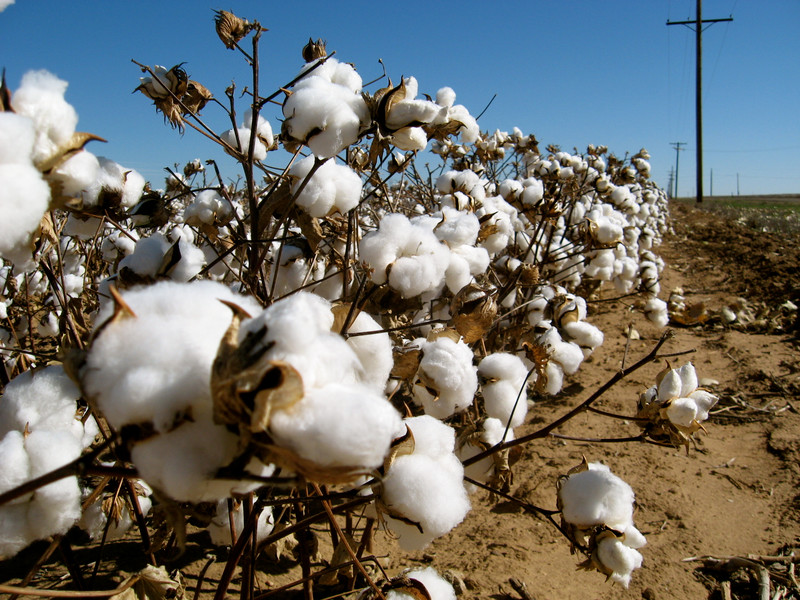In the current times, a significant rise in the demand for eco-friendly and sustainable items is perceived. Organic cotton is a leading choice these days in the textile sector because people have become more eco-conscious. It is crucial to understand why people prefer organic cotton over regular cotton to make the right decision when purchasing products made using cotton.
The guide below features a detailed comparison of standard cotton and organic cotton. You will learn the key difference in their environmental impact, the process of production, and various other aspects. So, let’s read.
What is Organic Cotton?
Organic cotton is a cotton type that is produced through natural methods that have a low impact on the environment. Organic cotton is grown without using any chemical fertilizers, synthetic pesticides, and methods like composting and crop rotation are used to ensure the health of the soil and protect these plants from pests.
Organic cotton offers a sustainable option for people as well as the environment, as it helps to reduce water pollution and improve soil health. In order to ensure that cotton meets the organic standards, organic cotton certifications are obtained. Some of these certifications include the following:
- GOTS is a Global Organic Textile Standard that ensures that the cotton is grown through a well-controlled process, ensuring environmental considerations. This certification also ensures that the products manufactured through it must have at least 70% organic cotton and are passed through strict testing and inspection at each stage.
- OEKO-TEX Standard 100 is not an exclusive organic cotton certification, but it ensures that the final product of textile doesn’t have any harmful substances.
Using certified organic cotton ensures the enhancement of usability and safety of the cotton products and compels more people to invest in them.

Production Process
The organic cotton production process is equipped with eco-conscious steps, each ensuring that no harm is caused during its cultivation. The steps involved in growing organic cotton are as follows:
- Seed Selection: It is the first step, and the non-GMO seeds are chosen for cultivation that are free from chemical coating.
- Soil Preparation: Organic cotton farmers use natural minerals and compost to enrich crops, and they look forward to crop rotation for natural pest prevention.
- Plant Growth: Weeds are manually removed rather than using any chemicals.
- Pest Control: Synthetic pesticides are avoided, and methods like using natural repellents are introduced.
- Harvesting: Organic cotton is handpicked, which reduces the damage to organic cotton fiber and also ensures that the quality of the cotton is maintained.
- Processing: After the process of harvesting is conducted, the organic cotton is processed in facilities where eco-friendly production practices are undertaken.

What is Conventional Cotton?
Conventional cotton, also called regular cotton, is one of the most common types grown across the globe. Regular cotton is grown by following farming practices that are highly dependent on pesticides, fertilizers, and various other synthetic inputs. These chemicals tend to maximize the output and also speed it up, but in return, they are harmful to the environment.
Environmental Impact:
The environmental impact of conventional cotton production is highly significant, and some of the reasons are as follows:
- Conventional cotton is produced in the presence of harsh chemical usage; it consumes about 16% of the insecticides present in the world and 7% of the pesticides by covering only 2.5% of the land for growth.
- Due to the consistent use of chemical fertilizers, the nutrients of the soil are impacted, leading to disruption of soil health and reducing its productivity.
- The cotton fields with so many toxic chemicals also contaminate the rivers and lakes nearby due to the water runoff, and it harms marine life.
- The use of chemical herbicides also reduces biodiversity and destroys the habitats of insects and other creatures.

Production Process:
The production process of regular cotton is given below, step by step.
- The seeds used in cultivating conventional cotton are genetically modified seeds that are meant to resist pests and are treated with insecticides.
- The soil preparation stage is then undertaken using chemical fertilizers to add fertility to the soil.
- To control the growth of weeds, chemical herbicides are sprayed rather than using any organic or manual alternatives.
- Insecticides and chemical pesticides are applied regularly to control pests.
- Conventional cotton needs a lot of water to grow, and large-scale irrigation is required, causing environmental damage in the long run.
- The process of harvesting is usually mechanical and to make it easier chemical defoliants are sprayed.
- Cotton is then processed in industrial facilities where additional toxic chemicals are used for finishing the fabric.
Key Differences Between Organic Cotton and Conventional Cotton
Understanding the major differences between organic cotton and conventional cotton is important for making informed decisions as a manufacturer or a consumer. Although both materials come from a similar plant, the method of their production, their impact on the environment, and their health implications may differ. The section below discusses in detail the significant difference between these two cotton materials.
Farming Practice
Organic Cotton: Organic cotton follows the natural process of producing cotton. It focuses on using compost, crop rotation, and biodiversity for the betterment of soil and eliminates the need for synthetic inputs.
Conventional Cotton: Conventional cotton uses synthetic fertilisers and pesticides that increase crop yield and impact the environment. It is dependent on monoculture production techniques that are harmful to soil quality in the long run.
Environmental Impact
Organic Cotton: Organic cotton requires less water and is mostly rain-fed, which helps reduce water consumption. It also grows by avoiding the use of pesticides and fertilizers that cause a carbon footprint. Hence, there are no harmful chemicals involved in producing organic cotton, and therefore, it helps preserve wildlife and biodiversity, minimizing environmental impact.
Conventional Cotton: Conventional cotton overuses chemicals that take away the nutrients of the soil, and due to the overuse of water, it also causes water scarcity. Runoff from pesticides and fertilizers leads to harm to the ecosystem and destroys habitats.

Health Benefits
Organic Cotton: Organic cotton is processed without any toxic chemicals and is therefore a safe choice for people who have skin allergies and sensitive skin or babies. It also breathes and offers enhanced comfort when organic cotton sheets and cotton garments are used.
The cultivation process of organic cotton is also beneficial for both the environment and the farmers, as there are no harsh chemicals involved in the process.
Conventional Cotton: Conventional cotton may contain traces of pesticides that lead to rashes and allergic reactions. Consistent exposure to the chemcial based textiles also have a long-term health concern for people using the textiles made out of it as well as for the health of farmers involved in cotton farming.
The Benefits of Choosing Organic Cotton Over Conventional Cotton
Due to the rise in health and environmental concerns, consumers prefer choosing organic cotton as a better alternative for cotton products. There are multiple benefits offered by organic cotton that people, as well as the environment, can make the most of. Some of these benefits are as follows:
Eco-Friendly Benefits:
The organic cotton farming process is designed keeping environmental preservation as a major goal, using natural methods. Hence, organic farming avoids using synthetic fertilizers and pesticides that are manufactured from fossil fuels. Hence, the production of organic cotton emits very few greenhouse gases.
Organic cotton farms also tend to promote a natural ecosystem that encourages the presence of beneficial insects, birds, and other wildlife. Using crop rotation and avoiding toxic chemicals helps create a healthy environment. These practices even reduce pollution by preventing chemical runoff in streams of water, protecting marine life.
Consumer Health:
Choosing organic cotton comes with multiple human health benefits. Due to being chemical-free, it helps prevent skin irritation and is gentle on the skin. It is a suitable choice for people with allergies or eczema, and especially for children with sensitive skin. Also, it has natural breathability due to the fact that it is not chemically treated, hence its cotton fibers are preserved.
Conventional cotton has traces of bleach, chemical dyes, and other chemical residues that lead to health risks and reactions on the skin. Organic cotton eliminates these risks and ensures that it is used safely. Due to its softness, organic cotton feels comfortable when worn in the form of clothes or used as a towel.
Supporting Sustainable Practices:
Choosing organic materials is not about choosing your needs, but it is an investment in a better future. Organic cotton comes with certifications that ensure the health and ethical criteria for organic farmers that they work in safe conditions and are treated fairly with their wages.
Moreover, organic farming also eliminates the use of chemicals, which tends to be a sustainable choice of farming. Organic farming techniques like crop rotation and composting are used to help maintain soil fertility.
The Challenges of Organic Cotton
Organic cotton is considered crucial for health and the environment, but producing it is not without various challenges. These challenges consist of high cost, lack of availability, and certification complexities. Some of these challenges are as follows:
Price Difference:
One of the major challenges of choosing organic cotton is its high price compared to normal cotton. The difference of cost is because of the nature of organic farming, it yields less output, uses expensive seeds, and is more labor intensive. Organic cotton production relies on chemical-free processes, and due to their environmental friendliness, they need more time and effort, leading to high cost.

Availability:
Lack of availability of organic cotton is a major challenge because it is produced in smaller quantities. It needs a specific infrastructure for its growth and processing, which is not as widespread as conventional cotton. It’s also vulnerable to pests, weather fluctuations, and yield inconsistency. Hence, such limitations make it difficult for the producers to produce organic cotton in larger quantities.
Certification Process:
The major challenges faced when producing organic cotton is the certification process. It is crucial to label it organic, and for this, certifications like GOTS and USDA Organic are needed. To activate this, the producers have to pass through rigorous inspection, follow strict guidelines and have to pay a hefty fee.
Hence, when it comes to the small scale farmers who are working in developing countries, the financial burden may be very high. Also, conversion from non organic cotton farming to organic also takes a lot of time, at least two to three years. After the certification is achieved, maintaining it by a regular audit is also a time-consuming and costly process.

How to Choose Between Organic and Conventional Cotton
When choosing between organic vs regular cotton the consumers and businesses must ensure to weigh the significance of cost, availability and environmental and health impact they may have. Every type of cotton has different requirements and making the right choice ensures a better purchase.
For Consumers:
Consumers who are environmentally conscious and have sensitivities to chemicals look forward to sourcing organic cotton. When purchasing organic cotton products like towels, bags, bedding, and baby clothes, always look for certifications like GOTS. These certification labels ensure that every item is made with organic fibers and is manufactured without any harmful chemicals.
Organic cotton is highly beneficial for kids and people with allergies as it is very soft and breathable. The initial cost of these products is high, but it comes with long term benefits like durability, environmental friendliness, and better skin health. Hence, organic cotton is better for people who are eco-conscious and health-conscious.

For Businesses:
Businesses that wish to integrate organic cotton into their product lines may benefit from the growing demand by consumers. Many fashion brands, textile vendors and baby products are considering adopting organic cotton as a part of their eco-conscious branding strategy.
By introducing a selective range of organic cotton products and highlighting the health and environmental benefits of it help businesses to boost their profitability.
Such a shift demands high upfront investment as you have to source certifications, and chemical free methods of extensive farming unlike conventional cotton. However, in the longer run it helps businesses to attract more consumers and meet the sustainability goals of being environmentally aware.
Price Considerations:
Cost is a major factor to consider when choosing between organic cotton and conventional cotton farming. Organic cotton products are highly expensive due to high production costs, certification requirements, and low yield.
However, these products offer a high value over the period of time. Organic cotton is also more durable and doesn’t cause allergic reactions or skin irritation.
Consumers may find it helpful to purchase organic cotton based trousers, bed sheets and other garments as it helps to prevent skin rashes, and due to this, they are also willing to pay a high price.
Frequently Asked Questions (FAQs)
What is the main difference between organic cotton and conventional cotton?
Organic cotton is grown without using any synthetic chemicals and uses natural methods. Conventional cotton is produced using synthetic fertilizers, GMOs and pesticides. Organic cotton is sustainable and eco-friendly.
Is organic cotton better for the environment?
Yes, organic cotton tends to reduce the water usage and also avoids chemical runoff, hence it ensures to protect the health of should and also the ecosystem. Overall environmental impact of organic cotton is close to none.
Can I find affordable organic cotton products?
Affordable organic cotton products are now commonly available because of the increase in demand. You can also look for these products during sales or hunt for such sustainable brands that are budget friendly.
Is organic cotton safer for my skin?
Organic cotton doesn’t have any toxic chemicals and hence is gentle on the skin. It is suitable for people who have allergies and for kids as well it is a safe choice for wearables and bedding.
How can I identify if a cotton product is organic?
These days the issue of fake organic cotton products is quite prevalent; hence, look for certification stamps like GOTS, OEKO-TEX on the labels. These labels indicate that the product is originally organic cotton and meets the safety standards.
Conclusion
Organic cotton and conventional cotton come from the same cotton plant, but they have different impacts on the environment and sustainability. Organic cotton is grown using natural methods that are harmless to the environment, health, and soil. It conserves water and protects natural resources.
Hence, choosing organic cotton not only supports environmental protection but also ensures protection of your health. Hence, choosing such options that help reduce the environmental footprint and promote ethical practices.
Call to Action:
If you are also looking to incorporate organic cotton products in your packing material, we at Tendee Accessory Shanghai Limited offer high quality custom bags manufactured in affordable prices. We can offer you these bags made with eco-friendly materials at wholesale prices when you place your bulk order. So, get in touch with us today and play a positive role in protecting the environment.





